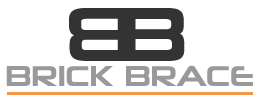The H.S.E’s interpretation of a competent person is;
“someone who has the necessary skills, experience and knowledge to manage health and safety.”
THE LEVEL OF COMPETENCE REQUIRED TO MASTER ALTERATIONS
The knowledge to take the correct action to eliminate risk and the ability to sufficiently control the risks that can’t be eliminated. The ability to read and understand architectural/structural engineer drawings and to ensure the assumptions which are made by either party are correct, with a further ability to question both parties when their assumptions are incorrect, as one missing detail or change can lead to a list of further required changes.
The experience and knowledge to know every task requires detailed planning upon its own merit due to each project being different and possessing the ability to use a variety/combination of temporary masonry support equipment most suitable.
Further factors that increase competence, are good;
Leadership and communication skills.
Reading skills.
Attitude.
Knowledge of both British legislation and of the ever-changing building regulations.
Ability to adapt to progress.
Understanding of how masonry acts above an opening and why masonry collapses, to prevent it from happening.
The factors that reduce the required level of competence to comply with the law, are;
Insufficient warnings, inadequate guidance, misleading information and taught bad habits.
Inferior or minus safety factor sums and the dangerous exchange of a structural engineers’ generic assumption of safe working loads of which prevents the end user from identifying the risks of overloading.
REQUIRED TEAM SKILLS
Bricklaying and carpentry skills to ensure remedial works, the “making good” and structural works are carried out within the building regulations and to ensure stability of the structure throughout the process and ensuring the materials, masonry & mortar mixes are suitable and match the specifications within the plans/drawings and that also match the existing structure for aesthetic purposes and having the knowledge and ability to be absolutely certain and not to assume.
HOW TO AVOID OVERLOADING
The main cause of collapse when altering masonry is overloading due to a lack of awareness that equipment capacity is variable.
Not being aware that the load over openings without a load-point is considerably more than only the triangle of masonry over openings with a Load-Point intact.
A severe lack of understanding that moving eccentrically loaded props further from the wall to gain sufficient fitting access reduces the variable working load limit to an unknown quantity.
A lack of, or no preparation/remedial works to prevent collapse from overloading equipment.
Unaware that an Acrow prop is designed for concentric loading upon the axis only, with a maximum eccentricity of 25mm (and is not within the CDM 2015 regulation as stated in section19, 2b when extended further than 25mm).
The combined working load of the Acrow prop and tongued prop attachment varies from 340Kg down to 0Kg of which is reliant on the further factors below;
A, the size, brand, quality, condition and age of the Acrow prop.
B, the height an Acrow props inner tube is extended and the number of pin-hole perforations that are showing above the outer tube.
C, the measurement of the eccentric load from the central-axis of the Acrow prop to the centreline of the propped wall.
D, how plumb and how tight and secure the tongued Acrow prop is installed beneath the wall.
When the working load of both combined parts vary considerably and the weight of the dynamic loads of a structure can increase to extremes, it becomes obvious that collapse is a possibility when only propping from eccentrically loaded bendable tongues upon a misused Acrow prop. There is a critical difference between using sound engineering principles and using products with variable working loads that do not address the laws of physics.
–
We created the Brick Brace Safety Tool to provide the necessary skills, experience and knowledge to manage health and safety during alterations. We provide written guidance and instructions with every purchase and also provide over 30,000 words of free, researched and unbiased guidance.
Factors that have disguised the true level of skills, experience and knowledge required by law to alter a masonry structure;
A dangerous de-scaling of a high-risk and specialist task; to ease and simplify, then providing no correct procedures, Insufficient warnings, inadequate guidance, misleading information upon the working load limit and the use of engineering double-speak language to obscure the truth.
DOUBLE-SPEAK
(Wikipedia)
Doublespeak is language that deliberately obscures, disguises, distorts, or reverses the meaning of words. Doublespeak may take the form of euphemisms (e.g., “downsizing” for layoffs and “servicing the target” for bombing),[1] in which case it is primarily meant to make the truth sound more palatable. It may also refer to intentional ambiguity in language or to actual inversions of meaning. In such cases, doublespeak disguises the nature of the truth.
